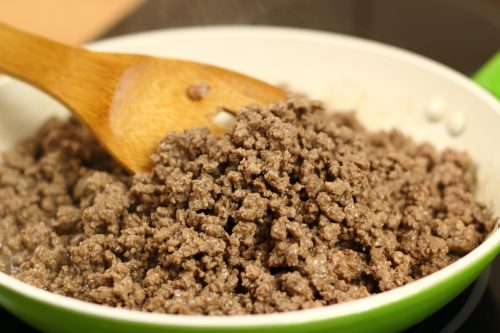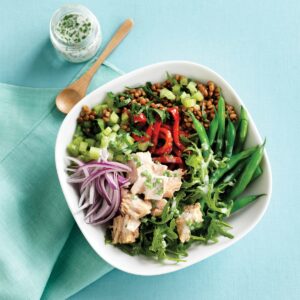
Here’s everything you need to know about cooking a family staple: mince.
The basics
- Mince typically comes in beef, lamb, pork and chicken varieties. Venison mince is now becoming more readily available.
- By swapping to a leaner mince, traditional recipes can become healthier. For classics like spaghetti bolognese, chilli con carne, shepherd’s pie or cottage pie, a very lean mince is the best choice. For dishes like burgers, meat loaf and other patties, one with a slightly higher fat content will help achieve the right texture.
How to choose
- A healthier mince option is one with a lower fat content. Mince is graded by the amount of fat it contains and often the label will highlight fat content.
- As a guideline, mince with a fat content of 10% or less is considered low in fat while mince with less than 4% fat is considered very lean. Leaner mince may cost a little more but it is better value for money. When it is cooked, more meat is retained and less fat is drained away than a cheaper, fattier mince.
- Minced beef and lamb, which are less than 4% fat, are often labelled as ‘premium’ or ‘extra lean’. They may also have the Heart Foundation ‘Tick’ label.
- ‘Lean’ or ‘prime’ minced beef are usually lean mince choices. Mince prices vary according to leanness – expect to pay between $10 and $12 a kilo for premium mince.
- Minced chicken is a good low-fat choice. Venison mince is very lean.
- Lean minced pork is another healthy option and can be used in place of other mince.
How to store
- Because meat that has been minced has more surface area, the exposure to bacteria is increased, so extra care must be taken in storage.
- Raw mince should be stored in the coldest part of your fridge (usually the bottom). Mince is best used on the day of purchase.
- If you are not going to use it within a few hours of purchasing, it is best to discard the packaging and store it in a dish. Cover loosely with foil. This will prevent any blood spillage in the refrigerator and so avoid contamination of other foods.
- The longest mince should be kept in the fridge is 3 days after purchase. It can be frozen for up to 2 months, wrapped tightly.
Cooking tips
- Mince is best cooked in batches if you intend to cook large quantities. This stops the mince stewing, turning grey and losing its flavour. Too much mince added to a pan crowds it and reduces the frying pan heat, so the mince cooks unevenly.
- Always use a non-stick pan for cooking mince. This means you won’t need to add any extra oil (except with chicken mince).
- Use flavoured canned tomatoes for tasty chilli sauces and tomato-based dishes. Look out for ones flavoured with onion, basil, garlic and olive oil.
- Use small quantities of tomato pastes, curry and herb pastes to flavour your browned mince. The larger surface area of the mince means their flavour is quickly absorbed and will help you create authentic-tasting dishes simply.
Basic mince technique
- Heat a large non-stick frying pan for a few minutes and then add your chosen mince without any added oil (if using chicken mice, you’ll need a small amount of oil). Use a wooden spoon to stir fry the mince to break it up and cook it evenly. Once all the mince has turned from pink to brown it is cooked. Drain off any liquid.
- Add a selection of vegetables and cook for a few minutes before adding any flavourings or sauces. This is a great way to ensure you achieve 5+ a day.
Recipe ideas
- Flavour 450-500g minced lamb with 2 teaspoons minced garlic and 2 teaspoons coriander paste. Add some diced onion and 1/4 cup couscous. Form into sausage shapes, thread onto skewers and grill. Serve the lamb koftas in warmed pita breads with tzatziki or natural yoghurt. Cook 400g chicken or pork mince. Add some chopped onion. Flavour with 2 tablespoons of pesto, 1/2 cup tomato sauce and use as a tasty topping on pizzas.
- Stir-fry 450-500g mince pork. Add some thinly sliced onion and capsicum with a little peanut oil and stir-fry. Add 2 tablespoons soy sauce and 1 tablespoon lemongrass paste and fresh coriander to flavour. Serve with noodles.
- Or try these tasty family favourites: Moussaka, Chicken and vege enchilladas
© Healthy Food GuideAll rights reservedReproduction without permission prohibited
www.healthyfood.com
www.healthyfood.com










